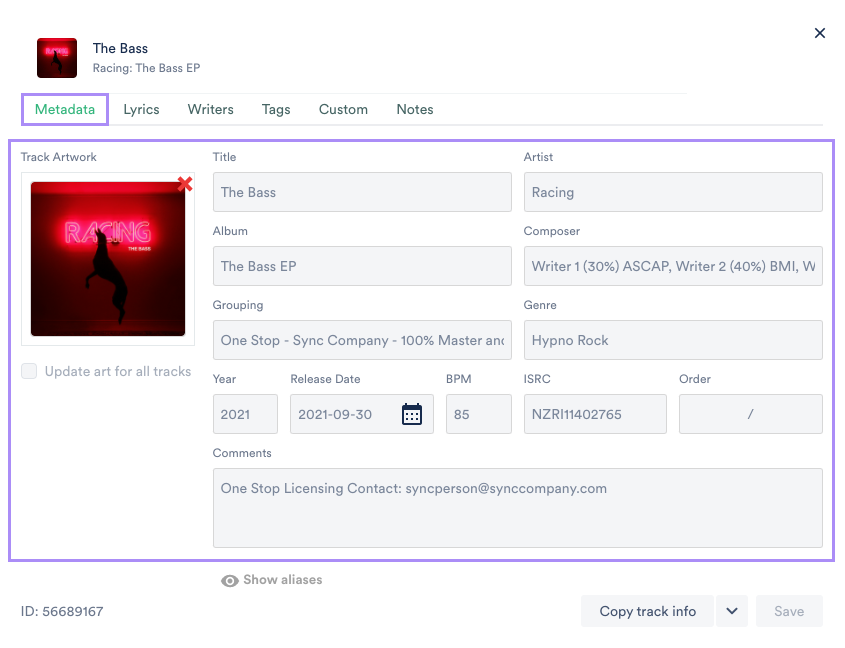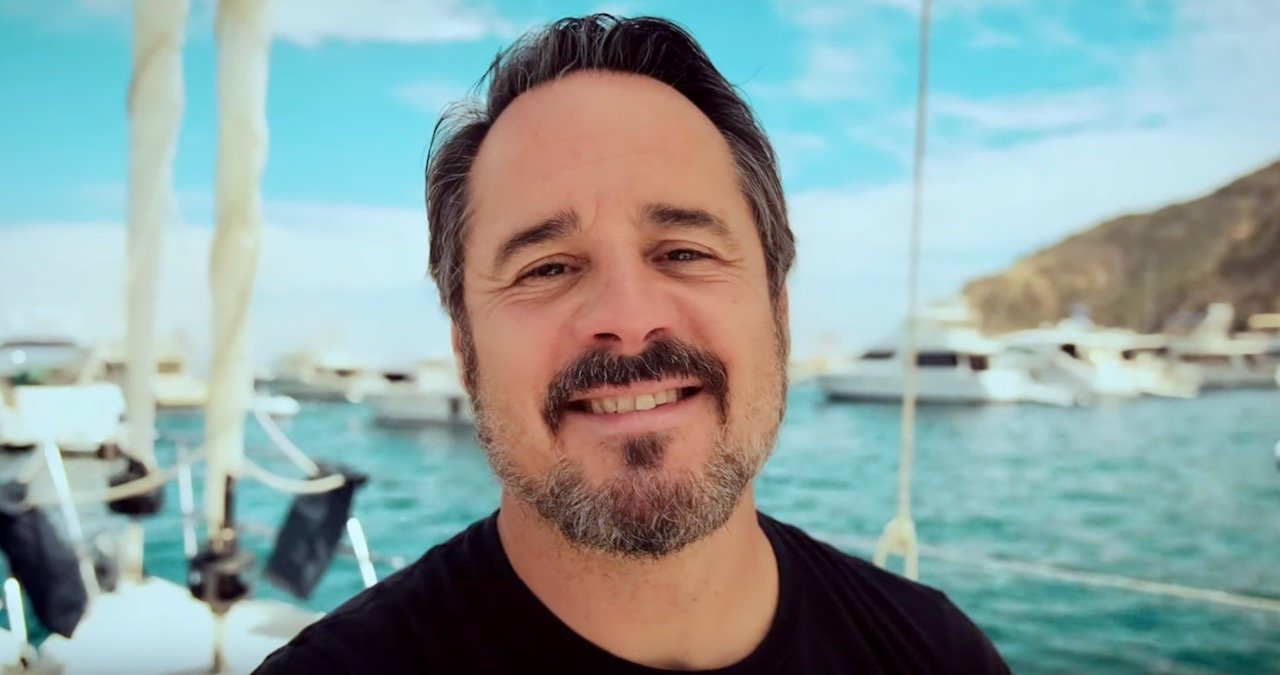Sync Briefs – What to Do & What Not to Do
November 29, 2022

Once you’ve built working relationships with music supervisors and become a trusted source for music, there’s a good chance they will start sending you music sync briefs for the TV and film projects (or ads) they are working on.
Success in sync licensing is about building strong relationships and earning their trust. To keep that trust, you must also know what to do and what not to do with the music sync briefs you receive.
In this post, we’ll take a closer look at what makes a good sync brief and how important it is to give the music supervisor exactly what they are asking for.
What Is a Sync Brief?
When a music supervisor is looking for songs, they will often prepare a sync brief that describes the project, the general mood, and the style and tempo of music they need for a scene.
As an independent artist trying to break into the sync licensing world, you will need to work diligently to establish strong relationships with music supervisors and hopefully, become one of their trusted sources.
The music sync briefs are not available to the public and are only sent to trusted sources including sync agents, music libraries, record labels, publishers, etc., and hopefully…you!
NOTE: Do not respond to sync briefs that you might find on the Internet. They are either not legitimate or they may be out of date by the time a third party has posted them online.
Not All Sync Briefs Are Equal
Sometimes the information in the music brief is very succinct and helpful with examples and a short description of the actual scene where the music will be utilized.
You may be given specific details such as male or female vocals, the era (music from the 1970s, 80s, or 90s), and what mood or emotion they want the music to evoke in the listener.
A detailed music sync brief will also tell you the genre and general tempo they are looking for and might look something like this:
Urgently need well-produced Bollywood/Bhangra versions of slow to mid-tempo Public Domain Christmas songs with male or female vocals. Must have solid arrangement and production qualities, and melodies must stay true to the original and be familiar to listeners. Your submissions should be in the general stylistic ballpark of the following reference:
Other times, sync briefs can be very vague with no reference tracks and open to a lot of different interpretations. The sync brief itself might be very brief and not provide a lot of information to work off. As an example:
Need instrumental jazz songs without high-pitched instruments.
This type of brief doesn’t tell us anything about how the music will be used, what tempo or mood it should convey, or what type of jazz music will work for the scene – early jazz, modern jazz, cool jazz, be-bop, Latin jazz, etc.
The Right Song for the Scene
Music supervisors get a lot of incredible songs that are amazingly well written and produced. Yet, it doesn’t matter how great the song is, if it’s not right for the scene it can’t be used. Non-romantic love songs are always in demand but are often hard to find.
They want the perfect song for the scene, not a song that will “kind of work.” You don’t want to develop a reputation for sending songs that miss the mark. If that’s the case, you won’t be a trusted source for long.

Reference Tracks?
Not all sync briefs will include reference tracks but if they do, they are there for a reason.
Listen to the reference tracks closely and only submit songs that are very similar in style, tempo, mood, and instrumentation to the reference tracks given. (See the reference link above.)
TV & Film Sync Briefs
To be chosen for TV or film sync placement, your songs need to be sync-worthy and in the right genre, expressing the right sentiment and mood of the scene and fitting the proper demographic of the production’s target audience.
Top music supervisor Andy Ross says that in film and TV, the priorities are 50% production, 25% vocal delivery, and 25% lyric but it’s different for advertising. In ads, lyrics are 80% of what they are looking for.
Advertising Sync Briefs

The turnaround times for ad agencies are often very fast and can sometimes be as little as 48 hours or less. Ad agencies do tend to give very detailed music briefs for the type of music they are looking for.
Here’s an ad agency sync brief example.
Large telecommunications firm looking for fun, positive, uplifting pop music with universal themes and lots of upbeat energy for a national fall campaign. Music must have great memorable melodies, compelling male vocals with plenty of mainstream appeal, plus catchy choruses with energizing rhythms. Songs must have modern pop instrumentation and be similar in style to Bruno Mars, Harry Styles, or Charlie Puth. Looking for key lyrics about “having something to say” or “telling the world.” Usage includes 8 weeks on cable broadcast and television plus 6 months on the Internet. Submit music by 2:00 PM eastern tomorrow.
The Do’s and Don’ts of Sync Briefs
Once you become a trusted source and music supervisors are sending you sync briefs for their current projects, it is vitally important that you follow protocol.
Here are some tips on what to do and what not to do when responding to music sync briefs.
Do’s
- Always read and understand the music brief thoroughly before submitting.
- Only submit music that will match everything they are asking for (style, tempo, mood, instrumentation, etc.).
- Only submit songs that will make the audience feel the emotions described in the sync brief.
- Make sure your lyrics match what is being requested (if they want positive, uplifting lyrics, make sure there are no negative references in your lyrics).
Don’ts
- Don’t send any music if you don’t have a song that fits exactly what is being asked for in the brief.
- Don’t send the song if it’s not the right feel or mood for what is wanted (even if you think it fits in every other way).
- Don’t send down-tempo songs if they are asking for mid or up-tempo songs.
- Don’t send songs with lyrics that mention, people, places, events, or other specifics, unless requested.
Prepping Your Music for Sync Briefs
As mentioned, do not send any songs if you don’t have music that will fit exactly what is asked for in the sync brief. If you do have music that is right for the pitch, make sure the song is properly prepared before submitting it.
Song Production
Today’s music supervisors get a lot of amazing songs that are very well produced, mixed, and mastered. Your songs will be competing not only with indie artists and songwriters but also with record label artists.
That means that your songs must be properly recorded, mixed, and mastered, and sound equally as great as similar music that you might hear on the radio, on TV, or on film.
Submit MP3 Files or Downloadable Links
The standard for file submission is MP3. However, DISCO.ac is quickly becoming the new standard for song submissions to music supervisors as it was created by music supervisors for music supervisors.

DISCO links don’t expire and allow you to include downloadable MP3 files with the Metadata embedded. You can also include the lyrics and WAV or AIFF files, plus instrumental versions, and alternate takes. It’s a great one-stop platform for storing and organizing your entire music catalog. **Soundcloud and Dropbox are also still viable options for submitting songs to music supervisors. Just make sure your MP3s are always streamable and downloadable.
Song Lyrics
It is not uncommon for sync briefs to also include the type of lyric they are looking for and/or the mood they want the lyric to convey. In general, for broadcasting, the lyrics must be clean.
If your song has explicit lyrics, let them know upfront. You may want to do an alternate version of the music for sync licensing to create a clean version specifically for sync licensing purposes. Lyrics should also be universal in nature. Unless requested, do not send songs that have lyrics that mention specific places, people, or events.
Metadata
Always make sure that the songs you submit have your metadata embedded in the MP3s. The metadata must include your contact information plus information on the writer and/or co-writers, plus the master owner. For a detailed guide, check out our metadata cheat sheet here.

Instrumentals & Stems
It’s always a good idea to also have an instrumental version of the songs you submit for sync briefs. Stems are not always necessary, but more and more productions are requesting them so if you can, it’s a good idea to have a copy of the stems available as well. Stems are usually required for advertising sync briefs.
The Art of the Song Pitch
If you are new to sync licensing and want to learn more, check out our Art of the Song Pitch (AOTSP) course.
Chris SD at Sync Songwriter, created this course specifically to help indie songwriters and artists break into the sync licensing world. AOTSP is an in-depth course that covers the following:
- How to research shows, movies, and music supervisors and accurately target your music
- How to record and produce your music for sync
- How to vet your music before pitching
- How to approach music supervisors when pitching your songs
- What works and what doesn’t work with cover songs
- In-depth interviews with a panel of working music supervisors
- Live pitch sessions with 3 music supervisors
- Crash course on music copyrights, royalties, contracts, deal points, etc.
- Monthly live coaching calls to answer any questions you may have about sync licensing
Our goal with AOTSP is to make sure you have the knowledge and the tools necessary to enter the sync licensing world as a professional.
You will learn the right skills and be taken seriously as you approach and pitch your music to music supervisors. We also cover what to do and what not to do when responding to sync briefs.
About Sync Songwriter

Sync Songwriter was started by Chris SD, a JUNO award-winning producer and engineer.
Along with The Art of the Song Pitch, Sync Songwriter will soon be releasing a new course called Produce for Sync that teaches indie artists and songwriters how to produce their songs for sync licensing.
Our goal is to not only introduce you to the sync licensing world but also to introduce you to some of the top music supervisors working today.
We help our students to build solid relationships with music supervisors so they can increase their chances of getting their songs into TV and film.
If you would like to learn more about Sync Songwriter, or if you still have questions about how music sync briefs work, please contact us online.
Hey! Give us a shout about anything really.
contact Sync Songwriter
Our goal is for you to start getting your music into TV & film.
Comments
Share to: